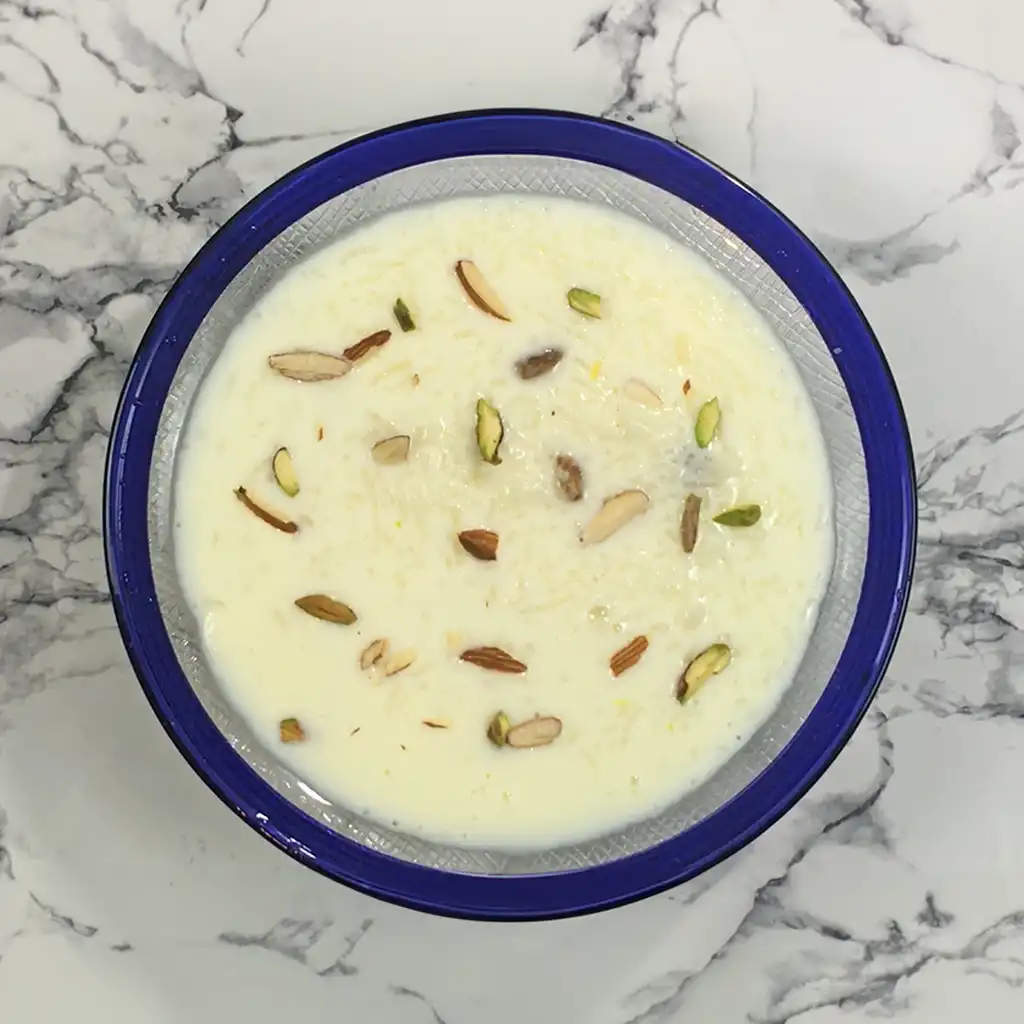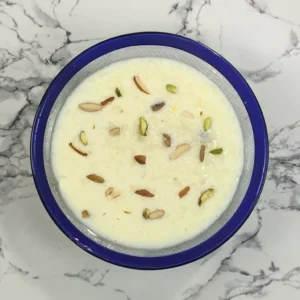
Rice Kheer, a delightful Indian rice pudding, holds a special place in many households and festivities. Originating from the Indian subcontinent, this creamy dessert is cherished for its comforting flavors and simplicity.
Despite its rich taste, creating Rice Kheer doesn’t require advanced culinary skills; it’s a recipe that warmly welcomes beginners into the world of cooking.
Traditionally served during festivals like Diwali or Holi, Rice Kheer embodies the essence of togetherness and celebration.
Its humble ingredients, primarily rice, milk, and sugar, come together to create a decadent treat that satisfies both the sweet tooth and the soul. The addition of raisins and nuts adds a delightful texture and flavor, elevating the dish to new heights.
Though its origins may be rooted in ancient culinary traditions, Rice Kheer remains a timeless dessert enjoyed by people of all ages. Its preparation, while simple, requires patience and attention to detail to achieve the perfect balance of creaminess and sweetness.
Expert Tip: Customize your Rice Kheer by adding your favorite nuts, such as cashews or walnuts, or flavorings like cardamom or saffron for a unique twist on this classic recipe.
Rice: Rice serves as the heart of this delectable dessert. Its starchiness adds a creamy texture to the kheer while absorbing the rich flavors of milk and sugar. Choose a medium-grain rice like basmati or any rice variety readily available in your pantry.
Milk: Milk forms the base of the kheer, providing a creamy and indulgent texture. The slow simmering of milk with rice allows the flavors to meld together, creating a luscious dessert that’s both comforting and satisfying.
Sugar: Sugar sweetens the kheer, balancing the natural nuttiness of rice and richness of milk. Adjust the amount of sugar according to your taste preferences, keeping in mind that the kheer will continue to sweeten as it cooks.
Salt: A small amount of salt enhances the overall flavor profile of the kheer, intensifying its sweetness and complementing the richness of the milk.
Raisins: Raisins add bursts of sweetness and chewiness to the kheer, offering delightful texture and contrast to the creamy rice pudding. Feel free to plump the raisins by soaking them in warm water before adding them to the kheer for a juicier bite.
Pistachios and Almonds: These nuts are used for garnishing the kheer, adding a crunchy texture and nutty flavor to each spoonful. Toast the nuts lightly before garnishing to enhance their aroma and crunchiness, elevating the visual appeal of the dish.
Expert Tip: Stir the kheer frequently while cooking to prevent the rice from sticking to the bottom of the pan and to ensure even cooking.
Expert Tip: Be patient while cooking the Rice Kheer. Slow and steady simmering allows the flavors to develop and the rice to become tender, resulting in a creamy and delicious dessert.
Rice Kheer can be stored in an airtight container in the refrigerator for up to 3-4 days. Make sure to cool it completely before refrigerating to maintain its freshness.
While Rice Kheer can be frozen, its texture may change slightly upon thawing. Freeze it in an airtight container for up to 1-2 months. Thaw overnight in the refrigerator before reheating gently on the stove, stirring occasionally.
Yes, you can use different types of rice such as jasmine rice or short-grain rice. However, keep in mind that the texture and cooking time may vary slightly depending on the type of rice used.
While sugar is traditionally used to sweeten Rice Kheer, you can substitute it with alternative sweeteners like honey or maple syrup according to your taste preferences. Adjust the quantity to achieve your desired level of sweetness.
Yes, you can make a dairy-free version of Rice Kheer using plant-based milk alternatives such as almond milk, coconut milk, or soy milk. However, keep in mind that the flavor and texture may differ slightly from the traditional version.
Here are some more recipes for you to enjoy! If you my recipes don’t forget to rate and leave a comment.
If you have any recipe suggestions, please do not hesitate to ask me. A great way to stay in contact with me is through Instagram, Facebook, Twitter and YouTube. Don’t forget to tag me @CookwithNabeela in your recipe photos!

Subscribe now to receive my latest recipes directly in your inbox. Stay up-to-date and never miss out!

I love to cook! I want to share with you my favourite, delicious family-friendly recipes. I want to inspire you to create fantastic food for your family every day.
Latest comments (5)
I follow your recipe as well as this one.
Can basmati rice be used, or does it have to be regular white rice?
Yes, it can. You can use any type of white rice 🙂
Why is there salt in ingredients?
It brings flavour to the kheer. We don’t add too much so it becomes salty but just enough to enhance the taste. 🙂